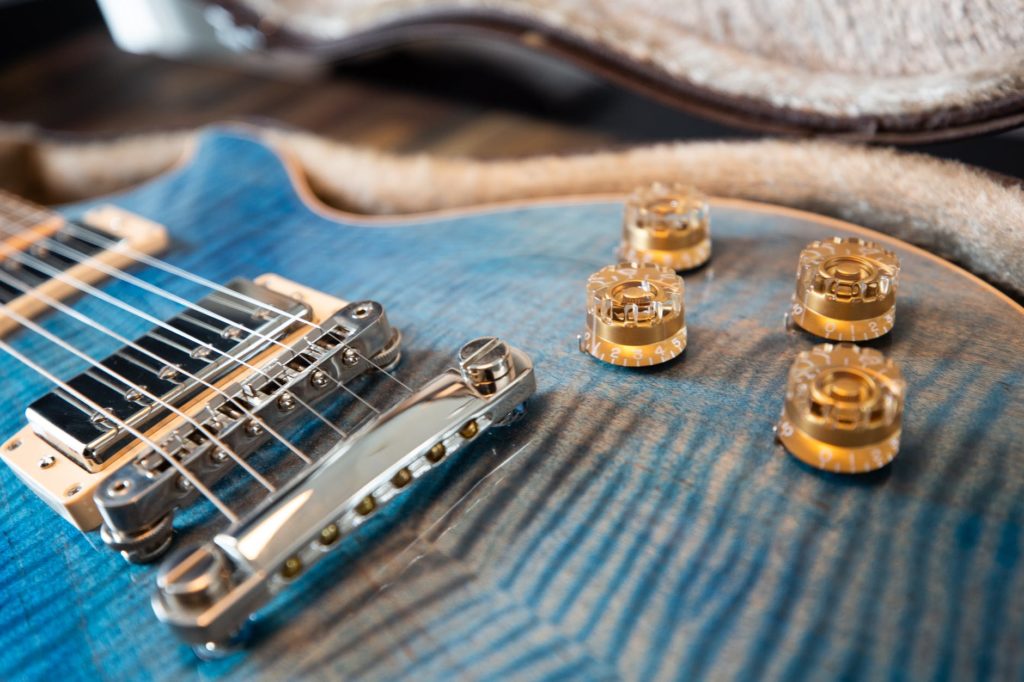
Guest Post – Faber USA
Intonating a guitar or bass can be a meticulous and time-consuming maintenance procedure, but the basic principles behind it are actually pretty simple.
When an instrument is properly intonated, all the open strings and every note on the fretboard sound at their correct pitches. If your guitar still sounds noticeably out of tune even after you’ve tuned the open strings, the intonation is off that is, the instrument is out of tune with itself. This effect is often slight rather than dramatic, but even slight intonation imbalances are noticeable enough to be annoying and demand adjustment.
After you’re done choosing your new Faber bridge for your guitar, you need to get started with the intonation. Faber guitar bridges being fully intonatable, the ABHR, ABRN, ABRM and Tone-Lock™ bridges intonation work almost similarly.
We have prepared a step by step guide for all guitar lovers out there, so they can set their favourite guitar piece all by themselves!
Step By Step Guide To Proper Intonation Of Your Faber Bridge
- First, try to restring your guitar with the string gauge of your need.
- Set up the guitar as per the pitch and adjust if required every time after changing the tuning or string gauge. After the tuning, stretch the guitar strings so that they hold the tune correctly.
- To check the intonation, utilizing your electronic tuner, think about the pitch of the open string against the twelfth fret and the twelfth fret consonant on your Low E string. In the event that the pitch of the twelfth fret is sharply contrasted with the open string, you should add some length to the string. This is accomplished by releasing the seat change screw to move the seat further away from the nut. Because of the expansion in tension at the rear of the extension, the pitch of your strings will go sharp. Retune and check the sound once more.
- In case the 12th fret is flat compared to the open string, move the saddle towards the nut and tighten the saddle adjustment screw at the bridge saddle. Slowly move the saddle towards the nut and once again the string pitch gets flat. Retune once after.
- Try making small adjustments and regular checks while making intonation adjustments. It’s easy to correct minor adjustments and you can do it anyway.
- Assuming you have overhauled your guitar bridge with a Faber ARBN span, you might see the changing travel of the saddle is somewhat not exactly our other extension types and you might observe that you can’t get to the right pitch.
These bridges are planned with reversible seats to make up for the diminished travel. Release the string so it pulls after the guitar bridges setup and totally slackens the change screw to permit you to eliminate the saddle. Turn the saddle around and set it back onto the extension. You should now have the option to get an amazing sound.
- After you’re done setting the tune, proceed to replicate the process across every string thereafter.
Note: When the guitar bridges saddle adjustment screw gets to the end of its seat, never force it to turn more than it freely does, which can lead to breaking the screw and damaging the saddle.
Faber Wraptonate™ bridge is fully intonatable in the same way their ABR bridge selection is. The bridge has a series of screws on the pickup facing side which adjust the travel of each saddle. If you have a wraparound bridge equipped guitar, the intonation setting is limited but still possible.
In case you have a normal Wraparound bridge, it’s not possible to set the intonation string by string basis. What you can do is, set the intonation across the overall bridge.
You can do it by adjusting the small “Allen key” screws placed on the bridge after contact points on both sides of the bridge.
To Tighten up
In case the 12th fret note is sharp, try to lengthen the string length. You can do that by tightening the “Allen key” screw and pushing the bridge away from the nut. Having only two adjustment points for Wraparound bridges, the intonation adjustment might not be similar on both E strings.
This applies if the intonation is flat on the 12th fret note. Then the guitar bridge will need to be moved closer to the nut by loosening the Allen key screws. With this, we come to almost the end of this article.
Faber does offer the Tone-Bar™ Compensated Wraparound bridge and the TPWC compensated “Lightning Bolt” style bridge making online guitar parts that you can replace on your own.
They will allow for an accurate adjustment across your guitar bridge overall.
